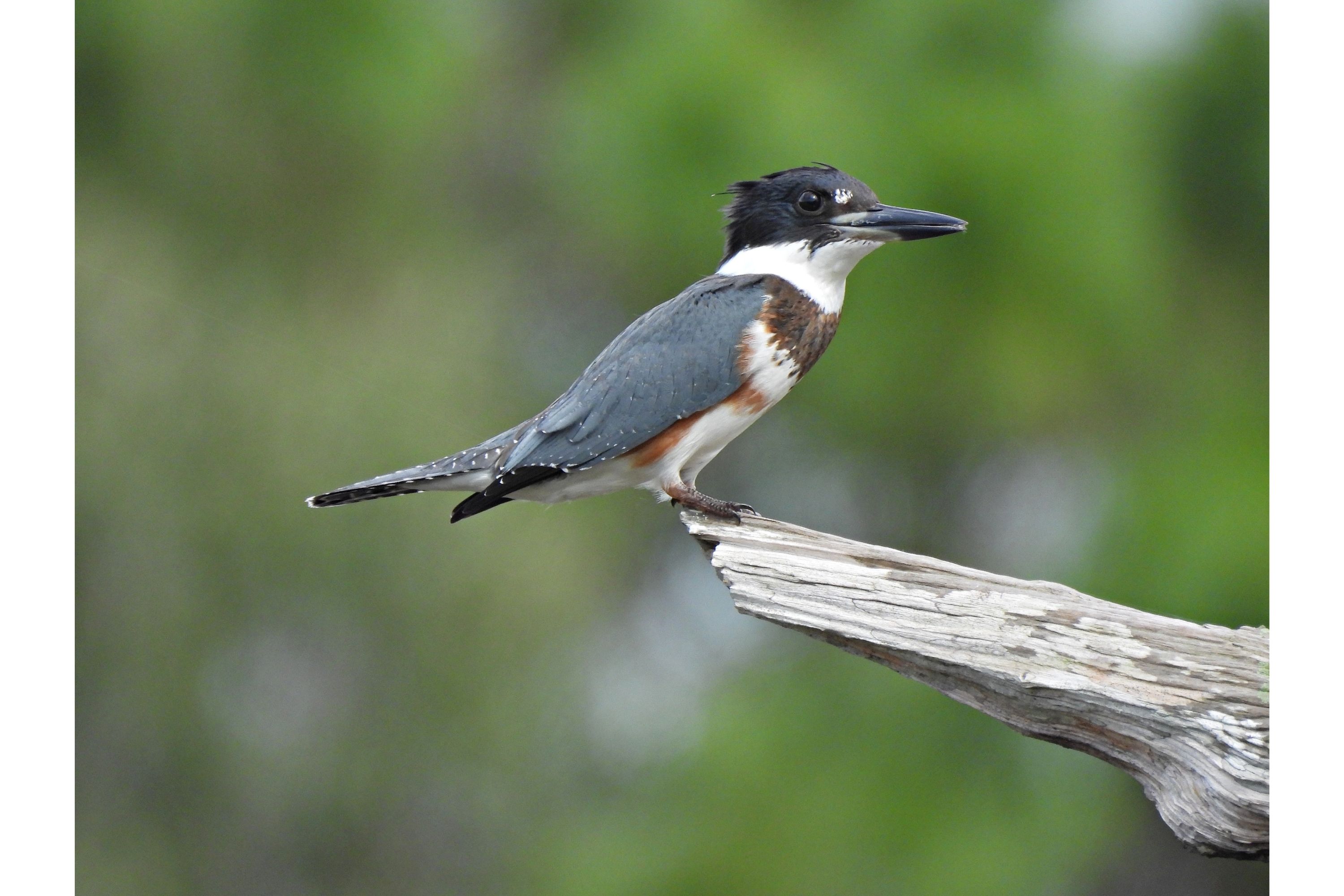Belted kingfisher
(Megaceryle alcyon)

Description
Megaceryle alcyon, commonly known as the Belted Kingfisher, is a large and distinctive bird of the family Alcedinidae. This species is widely distributed across North and Central America, and its striking appearance and unique behavior make it a favorite among birdwatchers and nature enthusiasts. In this article, we will delve into the biology, behavior, and ecology of the Belted Kingfisher, exploring what makes it such an interesting and important species. Taxonomy and Evolution: The Belted Kingfisher belongs to the order Coraciiformes, which also includes other families of kingfishers, as well as the bee-eaters, rollers, and todies. Within the family Alcedinidae, the Belted Kingfisher is placed in the genus Megaceryle, which also includes several other large kingfisher species found in the Americas. The evolutionary history of the Belted Kingfisher is still a subject of ongoing research, but it is believed to have diverged from other kingfisher lineages around 25 million years ago. Fossil evidence from the Early Miocene of North America suggests that the ancestors of the Belted Kingfisher were already present in the region by that time. Physical Characteristics: The Belted Kingfisher is a large and stocky bird, measuring around 28-35 cm in length and weighing between 113-178 g. It has a distinctive appearance, with a shaggy crest of feathers on its head, a white collar around its neck, and a broad blue-gray band across its chest that gives it its name. The upperparts are a bluish-gray color, while the underparts are white, and the wings and tail are a darker blue-gray. One of the most noticeable features of the Belted Kingfisher is its long, straight bill, which is thick and pointed, and used for catching fish. The bill is black in males and females, but the lower mandible of females also has a reddish-brown base. The eyes are large and brown, and set back in the head, which helps the bird to see underwater while diving for prey. Behavior and Ecology: The Belted Kingfisher is a solitary bird that is typically found near bodies of water, such as rivers, lakes, and estuaries. It is a skilled fisherman, using its sharp eyesight to spot prey from perches above the water, and then diving headfirst into the water to catch it. The bird may hover briefly before plunging into the water, and it can swim and dive underwater for short distances to catch fish. The Belted Kingfisher is also known for its distinctive vocalizations, which include a loud, rattling call that is often heard near its nesting sites. The call is used by both males and females, and is thought to serve as a territorial marker and to attract mates. Diet: The Belted Kingfisher is primarily a fish-eating bird, and its diet consists mainly of small to medium-sized fish, such as minnows, shiners, and sunfish. It is a skilled hunter and can catch fish both by diving from perches above the water and by hovering briefly before plunging into the water. In addition to fish, the Belted Kingfisher may also eat other aquatic prey, such as crayfish, frogs, and aquatic insects. It has also been known to prey on small mammals, such as voles and shrews, as well as birds and reptiles. The Belted Kingfisher is known to swallow its prey whole, head first, and may regurgitate indigestible parts, such as bones and scales, in the form of pellets. Its long, straight bill is well-adapted for catching and holding onto slippery prey, and its large eyes are thought to help it see underwater while hunting. Breeding: The Belted Kingfisher is monogamous, and pairs typically form in the spring before the breeding season. The birds construct nest burrows in earthen banks, typically near bodies of water, and may reuse the same site from year to year. The burrow is dug by both the male and female, and may be several meters deep, with a nesting chamber at the end. The female Belted Kingfisher lays between 5-8 eggs, which are incubated for around 23-24 days by both parents. The young are altricial, meaning they are born naked and helpless, and require several weeks of care and feeding by both parents before they fledge. Conservation status: The Belted Kingfisher is currently listed as a species of least concern by the International Union for Conservation of Nature (IUCN). This means that the species is not considered to be in imminent danger of extinction, and its population is considered stable throughout its range. However, like many other bird species, the Belted Kingfisher is affected by habitat loss and degradation, as well as pollution and other human activities that can impact the quality of aquatic ecosystems. In some areas, the bird may also be vulnerable to predation by introduced species, such as domestic cats and European Starlings. Conservation efforts for the Belted Kingfisher typically focus on protecting and restoring riparian habitats, such as riverbanks and wetlands, that are important for the bird's breeding and foraging. This may involve measures such as habitat restoration, land-use planning, and the creation of protected areas. Overall, the Belted Kingfisher is a relatively widespread and adaptable species, and its conservation status is generally considered to be stable. However, ongoing monitoring and conservation efforts are needed to ensure that the bird's populations remain healthy and resilient in the face of changing environmental conditions.
Taxonomic tree:







